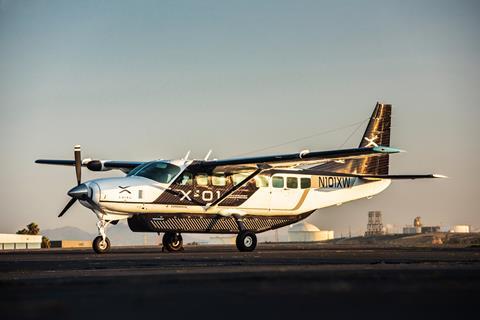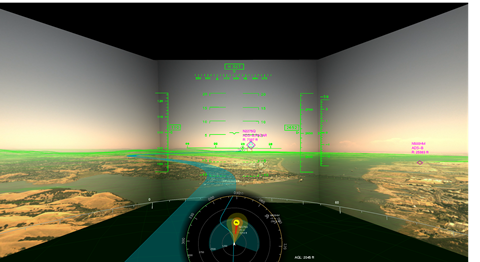Xwing, a San Francisco Bay Area autonomous systems startup, has conducted numerous fully autonomous passenger flights in a Cessna 208B Grand Caravan.
Touting itself as the first company to introduce autonomous technology for regional air transport, Xwing says on 20 August that following the successful tests, it is looking to begin commercial cargo operations in the coming months.
The venture-capital-backed firm, which was founded in 2016 and has been operating in “stealth” mode since then, has acquired a Part 135 Air Carrier certificate from the Federal Aviation Administration. That gives it permission to operate on-demand unscheduled charter services for air cargo transport.

“We believe the path to full autonomy begins with the air cargo market, and involves remote operators supervising fleets of unmanned aircraft,” says Xwing’s chief executive and founder Marc Piette.
Xwing joins numerous other aviation technology firms, including aerospace heavyweights Boeing and Airbus, in the quest to build autonomous flight systems for aircraft of all sizes. But while several companies have proven that the technology is available and works, regulators have been wary of certificating such a system, and the general public also has yet to be convinced that pilotless travel is a good thing.
That’s why Xwing is focussing on freight transport, saying it will be the first aviation market to embrace this technology. It is targeting the cargo feeder market and anticipates operating in a 434nm (805km) range.
“Confining our initial operations to cargo over unpopulated areas allows us to sandbox these commercial operations that puts the regulator at ease,” Piette says.

The company’s Autoflight System can be retrofitted onto existing aircraft, and integrated into the on-board flight control systems, the company adds. Detect-and-avoid sensors coupled with navigation and control software generates flight paths, communicates with air traffic control and maintains flight safety, the company adds.
“The system is designed to be platform-agnostic, to be able to be installed in any type of aircraft,” says Edward Lim, lead controls engineer at Xwing.
The company will initially operate its own fleet, but is looking to deploy and license the technology to other operators.



















